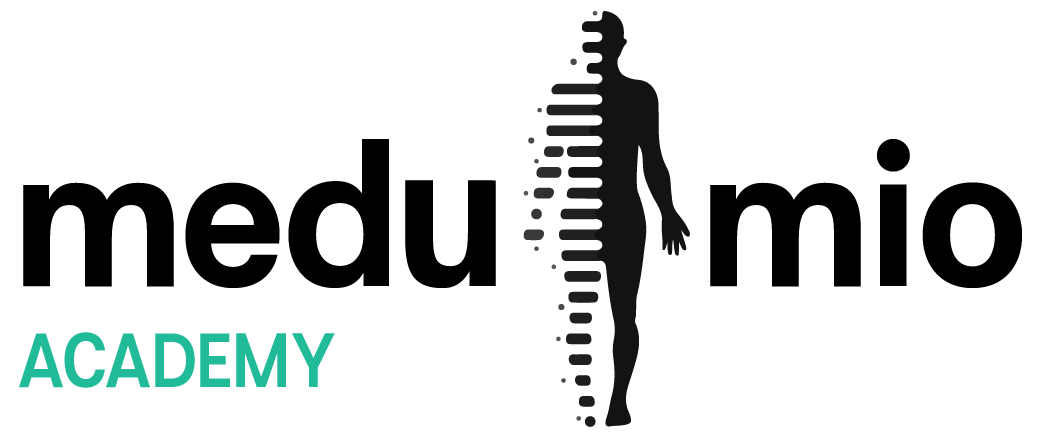
Your thyroid levels are in the normal range according to your doctor, but symptoms like constant fatigue, hair loss, and weight problems persist?

Hello, my name is Lisa Wagner, and I was diagnosed with underactive thyroid six years ago.
Constant exhaustion, digestive problems, and unexplained weight gain were my daily companions.
Despite mindful eating, it seemed impossible to lose even one kilogram.
This, even though I ate less than various calorie calculators indicated for my daily needs.
But the most burdensome was the persistent fatigue. Nearly every day, I was overcome by a feeling of deep exhaustion.
The medication prescribed by my doctor brought only temporary relief.
What I didn’t realize back then: Although an underactive thyroid sounds harmless, it actually causes multiple problems in the body.
The thyroid is like a command center for energy production and hormone regulation.
Thyroid problems often result in liver function declining and digestion being impaired.
The challenges pile up, and it’s difficult to escape the downward spiral.
Looking back and with my current knowledge, the overall picture of my symptoms finally makes sense.
In the past two years, I have been able to get almost all my symptoms under control and change the path from a downward to an upward spiral.
My thyroid levels are back in the optimal range, even though I was able to reduce my Euthyrox dose from 125 micrograms to 25 micrograms.
Since I have experienced firsthand how carelessly many doctors approach the thyroid topic (often they just prescribe a medication like Euthyrox and increase the dose month after month), I feel obligated to share my experiences with you.
In this article you will learn:
- the importance of the thyroid and its interaction with the liver
- why you still experience symptoms despite taking Euthyrox, even though your blood values are fine
- why zinc and selenium often don’t work
- the often overlooked key to thyroid problems.

Back to my personal experiences
Let’s get straight to the point.
When I was fed up with my constant exhaustion, I visited my family doctor and had a blood test done.
My doctor correctly recognized that my TSH level was elevated.
At that time, the value was unknown to me.
But my doctor had the necessary knowledge, and that was crucial.
He said: “The higher the TSH level, the fewer thyroid hormones are present, and the higher the risk of an underactive thyroid.”
My value was 5.
The normal range is between 1 and 2.5.
When I received the diagnosis of underactive thyroid, I felt somewhat relieved.
Finally, I was no longer in the dark.
There was now an explanation for my complaints.
My doctor gave me confidence that we could tackle the problem.
After all, I’m not an isolated case.
Through the correct dosage of medication, everything should normalize and the symptoms should subside.
Here we come to the point of “correctly adjusting” the medication.
If you yourself suffer from an underactive thyroid, you probably know what that means:
Your doctor prescribes Euthyrox – a classic for thyroid problems.
Initially, my doctor prescribed a dose of 25 micrograms of Euthyrox.
“Now you’re optimally adjusted, your thyroid should function normally again and produce enough hormones.”
Full of hope, I picked up the thyroid medication from the pharmacy and began taking it regularly.
But apart from now swallowing pills in the morning, not much changed.
After a month, my doctor increased the dose from 25 to 50 micrograms.
At my next doctor’s visit, I heard: “Good day, Ms. Wagner, your blood values have improved significantly.”
Yes, my blood values looked great.
But what good are these “great blood values” to me when I felt weaker than ever?
So my ordeal continued until I finally reached a daily dose of an incredible 125 micrograms of Euthyrox!
The blood values improved, but the symptoms worsened just as much.
My body hardly responded to it.
Blood values great, but more tired than ever
With this condition, I set out to search for answers.
It frustrated me to always hear from the doctor that everything was fine and nothing more could be done.
And the permanent intake of synthetic thyroid hormones didn’t seem good for my liver.
It was clear to me: I had to take action myself.
At the end of 2022, around Christmas time, the breakthrough came.
An old school friend gave me a book because she knew about my thyroid problems.
It was titled: “Every Day I Got Fatter and More Tired.”
Written by Vanessa Blumhagen, who is known as a thyroid expert.

I’m usually skeptical about such books, but I decided to give it a chance.
She herself suffered from an underactive thyroid.
She knew the symptoms I was experiencing all too well.
From weight problems to metabolic disorders to lack of drive, she had experienced it all.
She too found no support from doctors and had to take the initiative herself.
And of course, otherwise there wouldn’t be a book:
Vanessa successfully got her symptoms under control.
Curious, I began to read…
An insight that completely changed my life
With a charming writing style, Vanessa explained how the thyroid works.
In her book, I learned that a high TSH level signals that the thyroid should produce hormones.
The term “TSH” immediately reminded me of my blood tests.
TSH controls thyroid activity.

The pituitary gland, also known as the pituitary gland, sends a signal:
“Thyroid, start hormone production – we need energy.”
This energy is essential for various things, such as:
– Generating heat in cold weather
– Energy to wake up
– Regulating the menstrual cycle
– Regulating the digestive tract
– Promoting hair growth
– and much more.
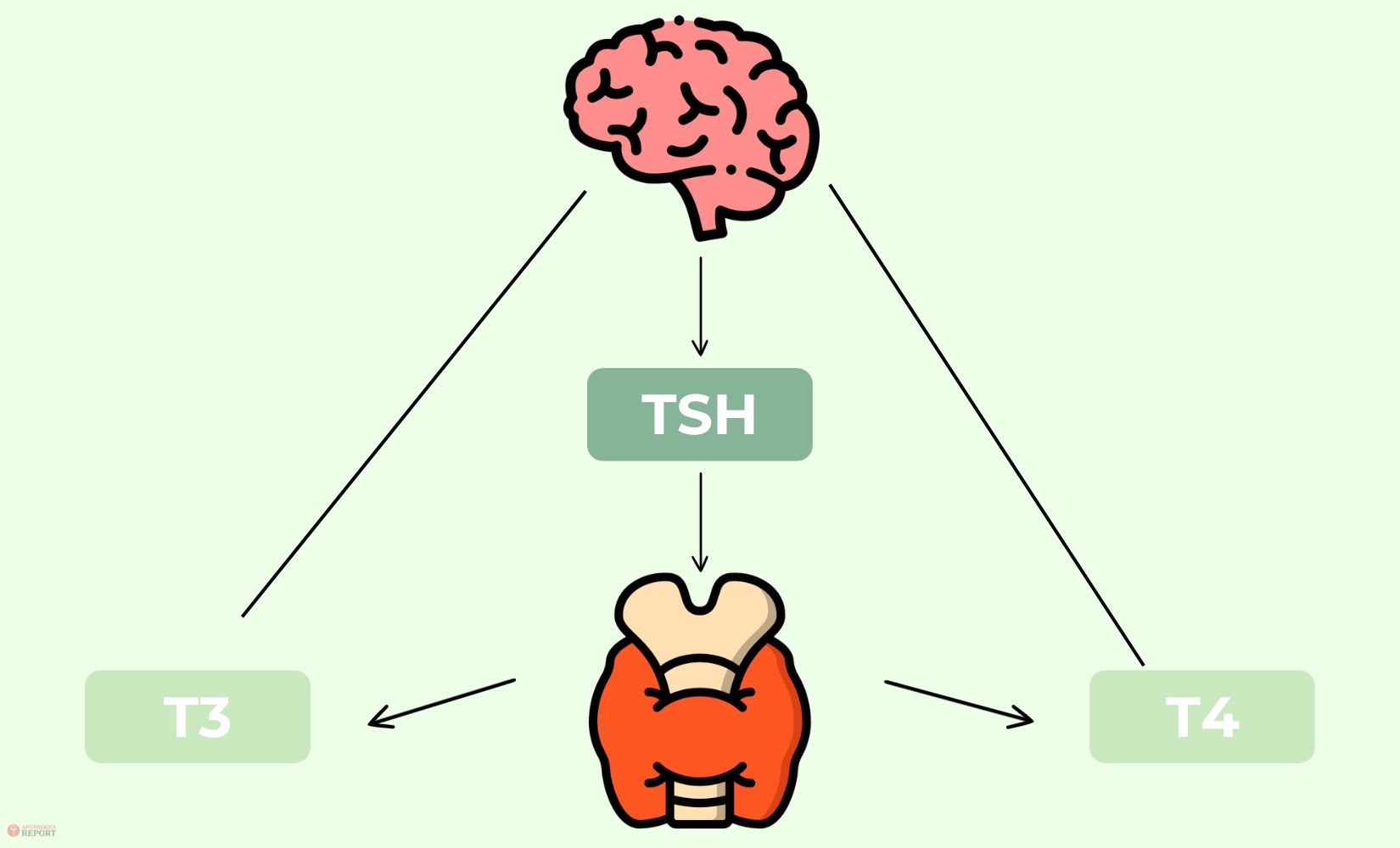
Something was obviously not right with me…
My TSH level had normalized.
According to the doctor, my blood values were back in the green zone.
But my mood worsened from day to day.
What is needed so that not only the blood values improve, but also the complaints?
Vanessa explains that it’s not enough to stimulate the thyroid to produce more hormones:
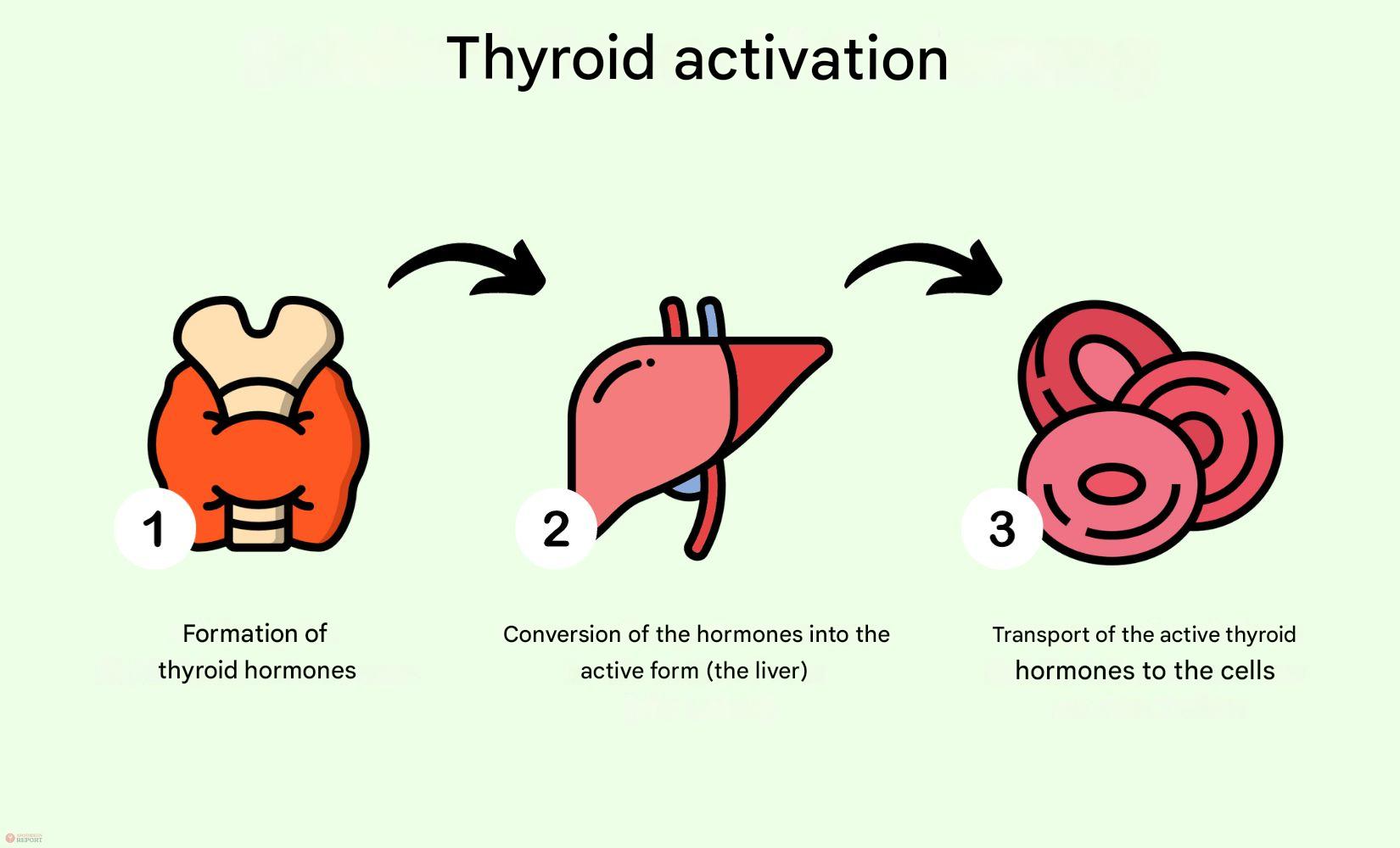
The thyroid hormones must be converted into an active form and transported to the cells.
For this process, a smoothly functioning system is required:
Only when all these steps work together seamlessly does energy production in the cells function.
Only then are we full of energy, no longer feel constantly exhausted, and no longer have cold feet.
As soon as the metabolism gets going again and the lethargy disappears, you can imagine what effect this has on your weight.
It’s almost unbelievable.
I want to explain to you how, according to Vanessa, the thyroid can work effectively again and bring back energy.
Step 1: Formation of thyroid hormones
When the TSH hormone from the pituitary gland gives the signal, the process begins.
Something special then happens in the small cells of the thyroid.
This is where the thyroid hormone thyroxine (T4) is primarily produced.
T4, known as the inactive thyroid hormone, consists of the amino acid tyrosine and four iodine atoms.
Many doctors focus only on this point.
They see a high TSH level (and sometimes a low T4 level, if checked) and prescribe Euthyrox, i.e., T4.
They usually only treat the symptoms with medication.
Unfortunately, that’s often not enough.
Step 2: Conversion of thyroid hormones (T4 to T3)
Your body can’t do much with the hormone thyroxine (T4) alone.
It’s actually just a precursor.
The real effect unfolds when the inactive T4 is converted into active triiodothyronine (T3)—this is where the magic begins!
How does this happen?
Enzymes remove an iodine atom from T4.
This activation takes place in the liver and is called 5′-deiodinase.
Step 3: Getting T3 to the cells
Now your thyroid hormones are active and ready to release energy in the cells.
But how do they reach their destinations?
This happens through special transport proteins.
These proteins need certain nutrients to transport hormones in the blood to the cells.
When your thyroid hormones arrive in the cells, energy production begins.
Back to my blood test again
My TSH level was normal and my T4 level was good—thanks to Euthyrox.
Everything looked perfect to my doctor.
There was enough T4 in my body.
But I still didn’t feel well.
That meant my symptoms had to be coming from something else:
- Either T4 couldn’t be converted into active T3,
- or the T3 couldn’t get into my cells.
There was no other explanation.
It certainly wasn’t due to a low T4 level.
Why does the conversion from T4 to T3 often not work?
We know that T3 activation mostly takes place in the liver.
And there’s an indicator that shows whether T3 activation (5′-deiodinase) can run smoothly:
The glutathione level.
Thyroid expert Dr. Dorothea Leinung explains in one of her articles:
“When our thyroid produces thyroid hormones, it simultaneously generates free radicals. If there isn’t enough glutathione present to keep this oxidative stress in check, the excess can affect other tissues.”
As early as 1988, a connection between glutathione and T3 activation (5′-deiodinase) was proven and documented in a study.
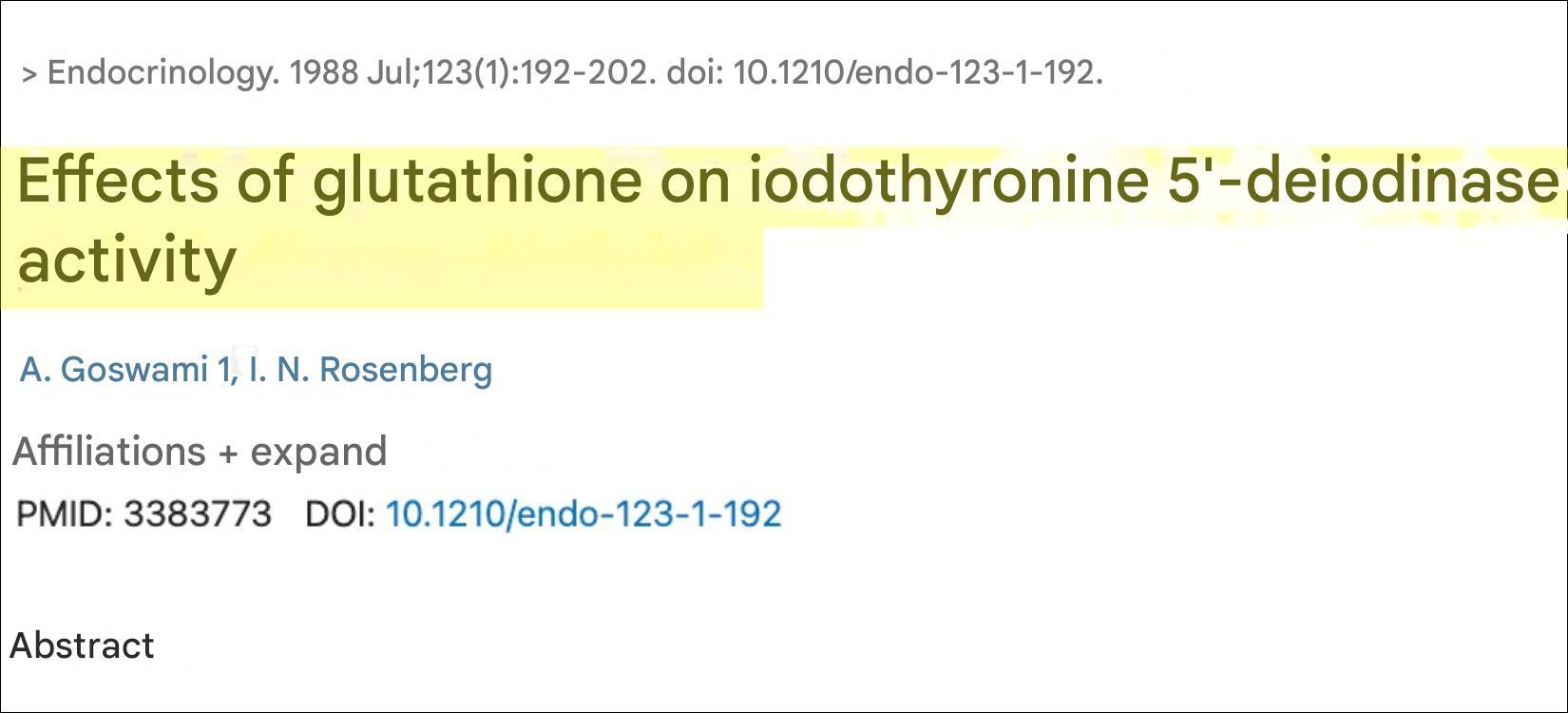
Glutathione, the most widespread antioxidant in the body, is often called the master antioxidant.
Interestingly:
It’s composed of the three amino acids cysteine, glycine, and glutamic acid.
Another study shows that the amino acid L-methionine plays a key role in the liver in fighting oxidative stress.
Methionine is a precursor of cysteine, one of the three amino acids of glutathione.
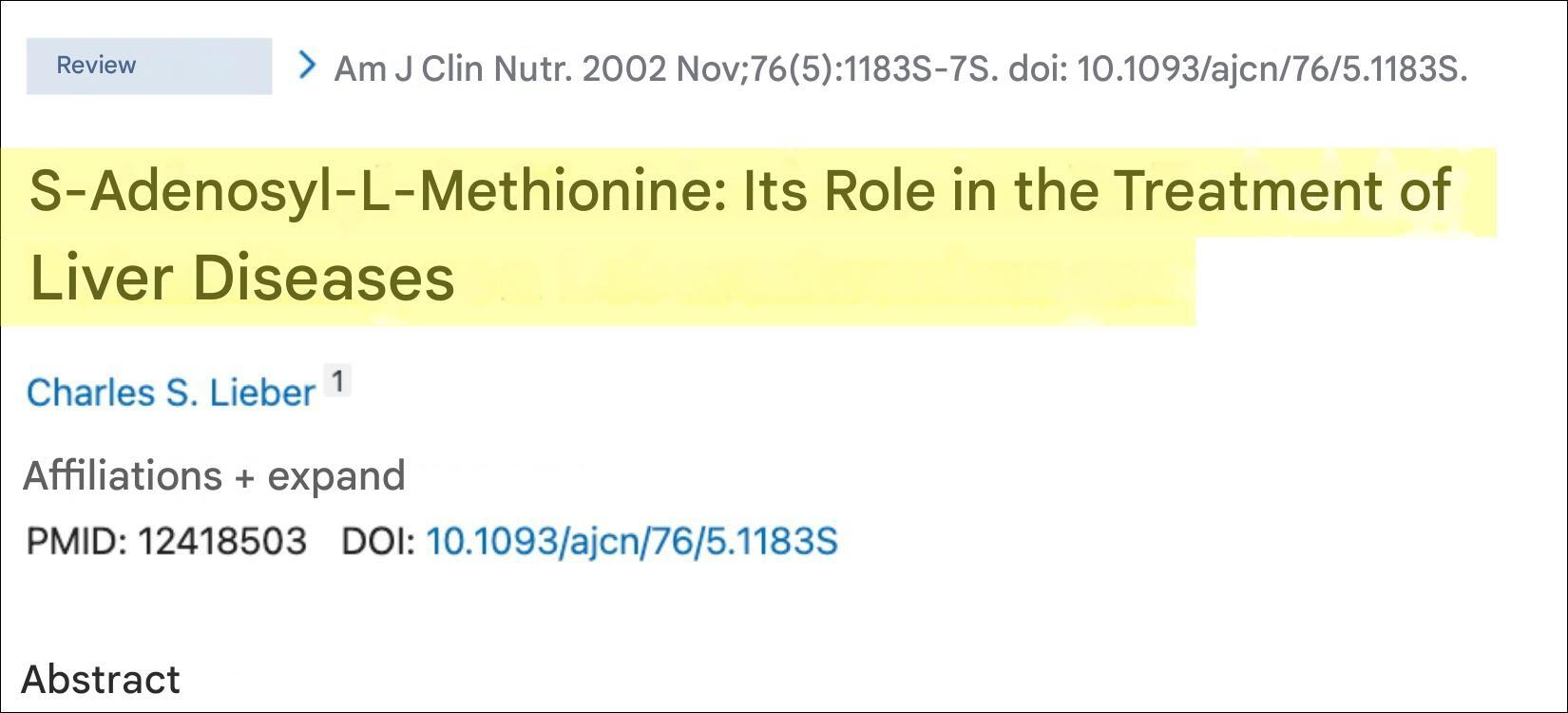
I finally found the crucial puzzle piece
After thoroughly reading the studies, I delved deeper into research to better understand the relationship between amino acids and thyroid health.
In addition to Vanessa Blumhagen’s book, I discovered Dr. Simone Koch’s Protein Guide during my research journey.

She’s the author of five bestsellers on topics such as gut health, thyroid diseases, and metabolic health.
In her work with thyroid patients, she found that almost all of them have a deficiency in the amino acid proline.
Proline is particularly important for thyroid tissue and is mainly obtained through animal protein sources.
The connection between thyroid problems and amino acid deficiency became increasingly clear in my research.
So I wondered whether I might also have an amino acid deficiency.
Many people—and I was one of them—believe that they get enough protein and thus all essential amino acids through their normal diet.
In reality, however, this is often not the case!
Especially women frequently consume too little animal protein, which is essential for the conversion of T4 to T3 and the transport of thyroid hormones into the cells.
For vegans and vegetarians, the problem is even more pronounced.
The quality of protein sources varies greatly.
An indicator of the quality of a protein in terms of essential amino acids is the DIAAS value (Digestible Indispensable Amino Acid Score)
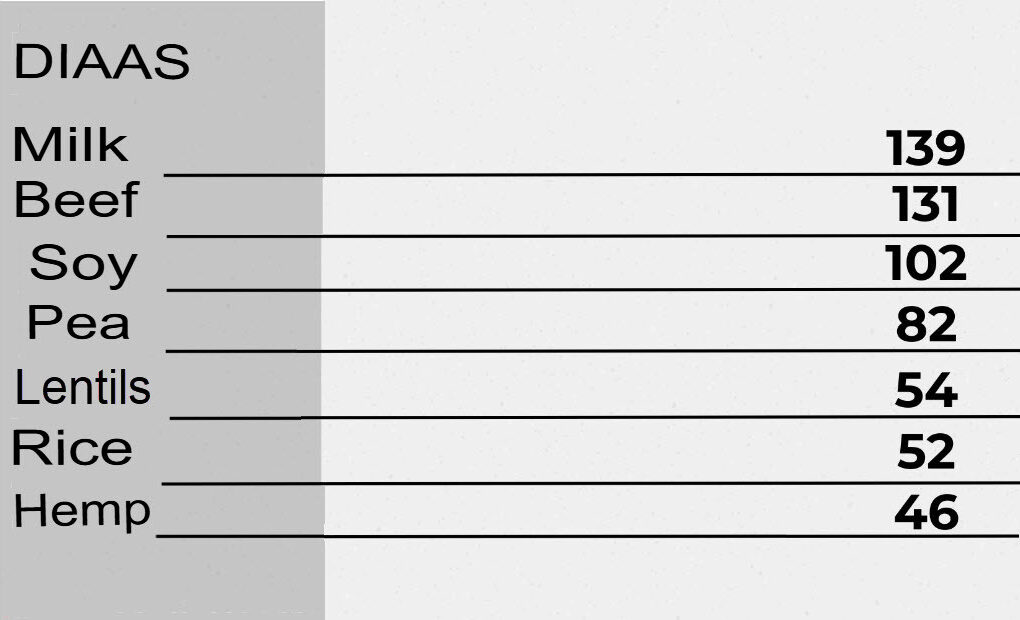
Animal protein has a higher biological value than plant protein.
I even believe that most people with underactive thyroid have an amino acid deficiency.
This is due to two factors:
#1: Our protein requirement is significantly higher
With thyroid problems, the protein requirement is often higher.
This is because the liver is central to protein synthesis, protein breakdown, detoxification, and amino acid metabolism.
A stressed liver, as occurs with underactive thyroid, can lead to toxin accumulation and increase the need for amino acids required for detoxification.
A high requirement quickly leads to deficiency symptoms.
The German Nutrition Society (DGE) normally recommends at least 0.8g of protein per kilogram of body weight for adults.
For people with Hashimoto’s, a form of underactive thyroid, at least 1.5g of protein per kilogram is recommended.
That means for a 70kg woman over 100g of protein daily.
When was the last time you ate 100g of protein in one day?
Even I rarely achieved such high protein consumption.
Reason #2: Digestive problems
Like me, you might also have digestive difficulties, which means you can’t absorb nutrients effectively.
This means even if you regularly consume protein—whether through meat, protein shakes, eggs, or dairy products—you could still suffer from an amino acid deficiency.
Amino acids and thyroid function
From then on, it was clear to me: I need essential amino acids.
My goal was to get my body to convert T4 to T3 again and ideally eventually produce enough T4 independently (without medication).
The question arose which method I should choose:
Option 1: Eat more meat and look for foods with high bioavailability,
Option 2: Take essential amino acids directly.
I chose the faster method.
I call it the ‘Amino-Direct Strategy’.
By taking essential amino acids in pure form, digestion isn’t additionally burdened.
This was advantageous for me, since my digestive system was still having problems at that time.
It’s also more cost-effective than eating meat daily.
However, before I looked for a suitable amino acid supplement, I first had to find out which amino acids are essential for me.
Which amino acids are crucial for underactive thyroid?
Dr. Simone Koch explains it in her Protein Guide like this:
Proteins are composed of amino acids that are structured differently. A distinction is made between essential and non-essential amino acids.
Essential amino acids cannot be produced by the body itself. They must be obtained from outside sources.
Non-essential amino acids are produced by the body itself. However, only when sufficient essential amino acids are present.
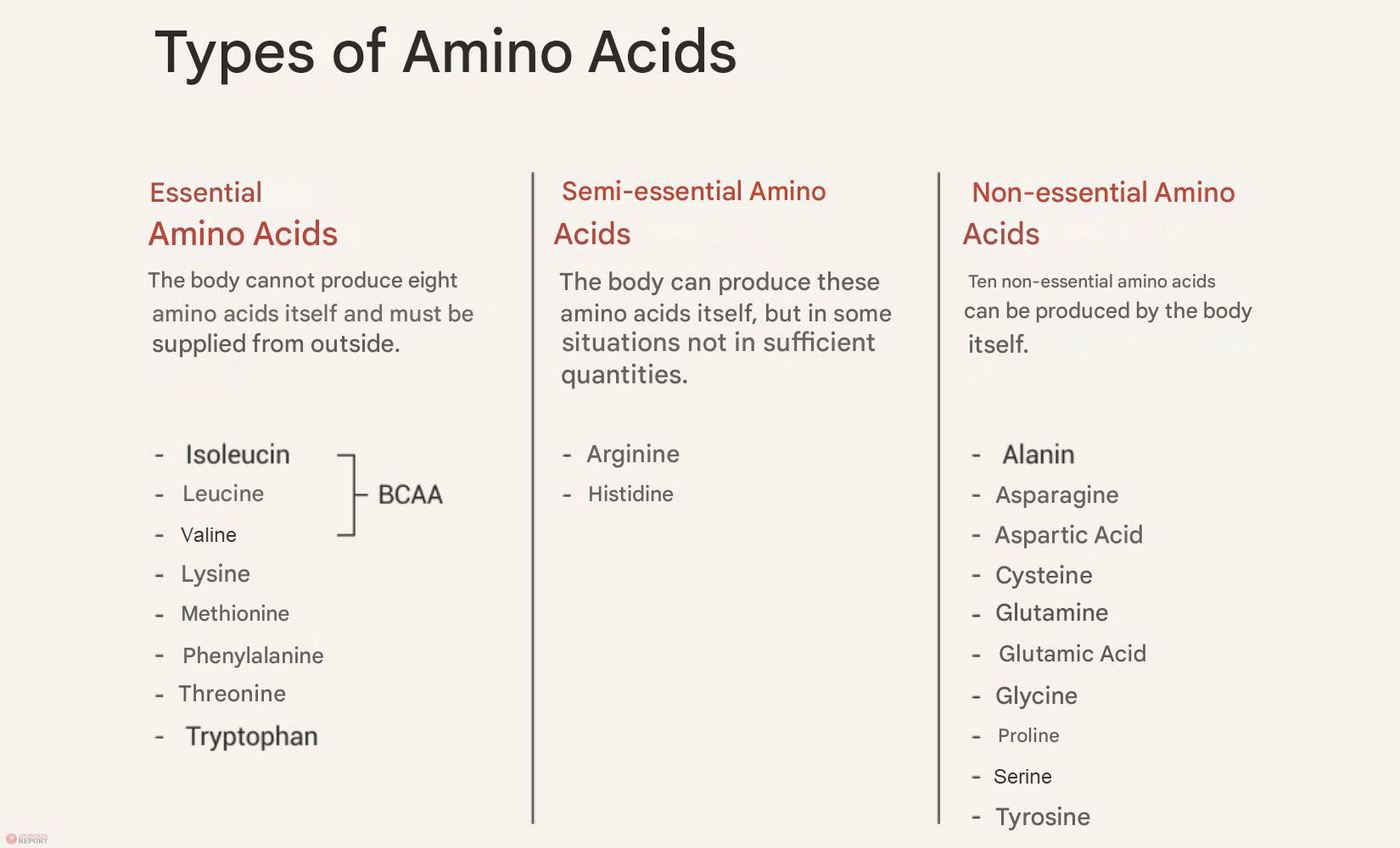
The Crucial Essential Amino Acids in Hashimoto’s
The following amino acids, which the body cannot produce on its own, are particularly important for underactive thyroid:
L-Methionine and the Conversion of T4 to T3
It is known that people with underactive thyroid often have difficulties with detoxification.
Methionine is the starting point for glutathione synthesis in the liver. A sufficient amount of glutathione is necessary for the conversion of T4 to T3 to take place in the liver.
Additionally, methionine is important for the absorption of zinc and selenium.
A deficiency in methionine can therefore impair the absorption of these elements.
This means that even if you consume plenty of zinc and selenium, it is not guaranteed that the body can actually utilize them.
L-Phenylalanine for the Formation of Tyrosine and T4
Phenylalanine is the precursor of tyrosine, an essential component of thyroid hormones. If phenylalanine is lacking, various hormones, including thyroid hormones, cannot be produced sufficiently, leading to symptoms such as depression and fatigue.
L-Lysine and Fatigue
A deficiency in lysine can weaken the immune system and thus increase susceptibility to illness, a common problem with underactive thyroid.
Additionally, lysine is required for iron absorption. This helps explain the chronic fatigue and exhaustion in thyroid patients. By correcting the lysine deficiency, iron absorption improves, making you feel more energetic.
The Crucial Non-Essential Amino Acids in Hashimoto’s
Once the body is supplied with all essential amino acids, it can also produce the non-essential amino acids on its own. Because these are important too:
Tyrosine and T4 Production
Tyrosine serves as a precursor for the thyroid hormones thyroxine (T4) and triiodothyronine (T3).
Without enough L-tyrosine, the body cannot produce sufficient thyroid hormones, which can cause metabolic problems and other health difficulties.
To avoid a permanent dependence on levothyroxine, it is important that the body always has enough tyrosine.
Glutamine, Cysteine and Glycine
These amino acids together form glutathione, an important antioxidant for the liver.
Glutathione plays, as previously mentioned, a key role in the conversion of T4 to T3.
It also brings additional positive effects for liver health.
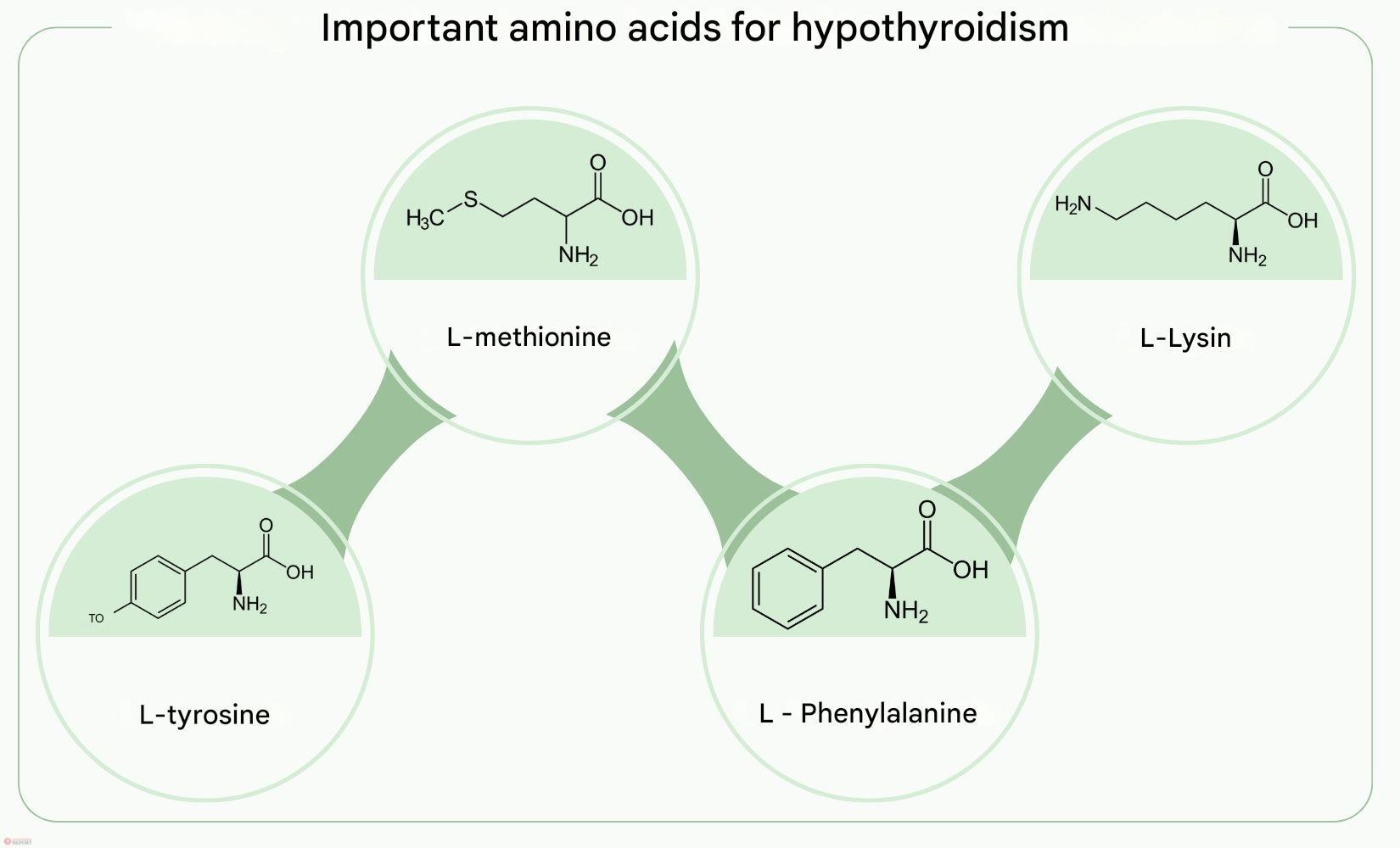
The Human Amino Pattern
Vanessa Blumhagen mentions the importance of amino acids in her book.
She advocates for amino acids based on the so-called Human Amino Pattern.
The Human Amino Pattern was researched at the International Nutrition Research Center (INRC) in Florida by Prof. Dr. Luca Moretti.
It consists of a combination of 8 essential amino acids and is derived from purely plant sources – specifically through fermentation from corn starch – and is thus 100% vegan.
The 8 essential amino acids are absorbed through the mucous membranes and are available in the body after just 19 minutes.
The body can also produce all non-essential amino acids from them.
Therefore, it is crucial to use amino acids based on the Human Amino Pattern.
This way, it is not necessary to additionally take glutathione, glycine, glutamine or cysteine.
Furthermore, it is better when the body produces the non-essential amino acids itself.
We shouldn’t serve everything to the body on a silver platter, but rather activate its own metabolic processes.
When Blumhagen published her book in 2013, there were no comparable amino acid supplements in German-speaking countries.
Today, that’s different.
The Amino 8 formulation from Viktilabs is based exactly on the Human Amino Pattern, is produced in Germany and is specifically designed for people with intolerances.
And I can say in advance: Amino 8 was the missing element for me that brought me more energy and better well-being.
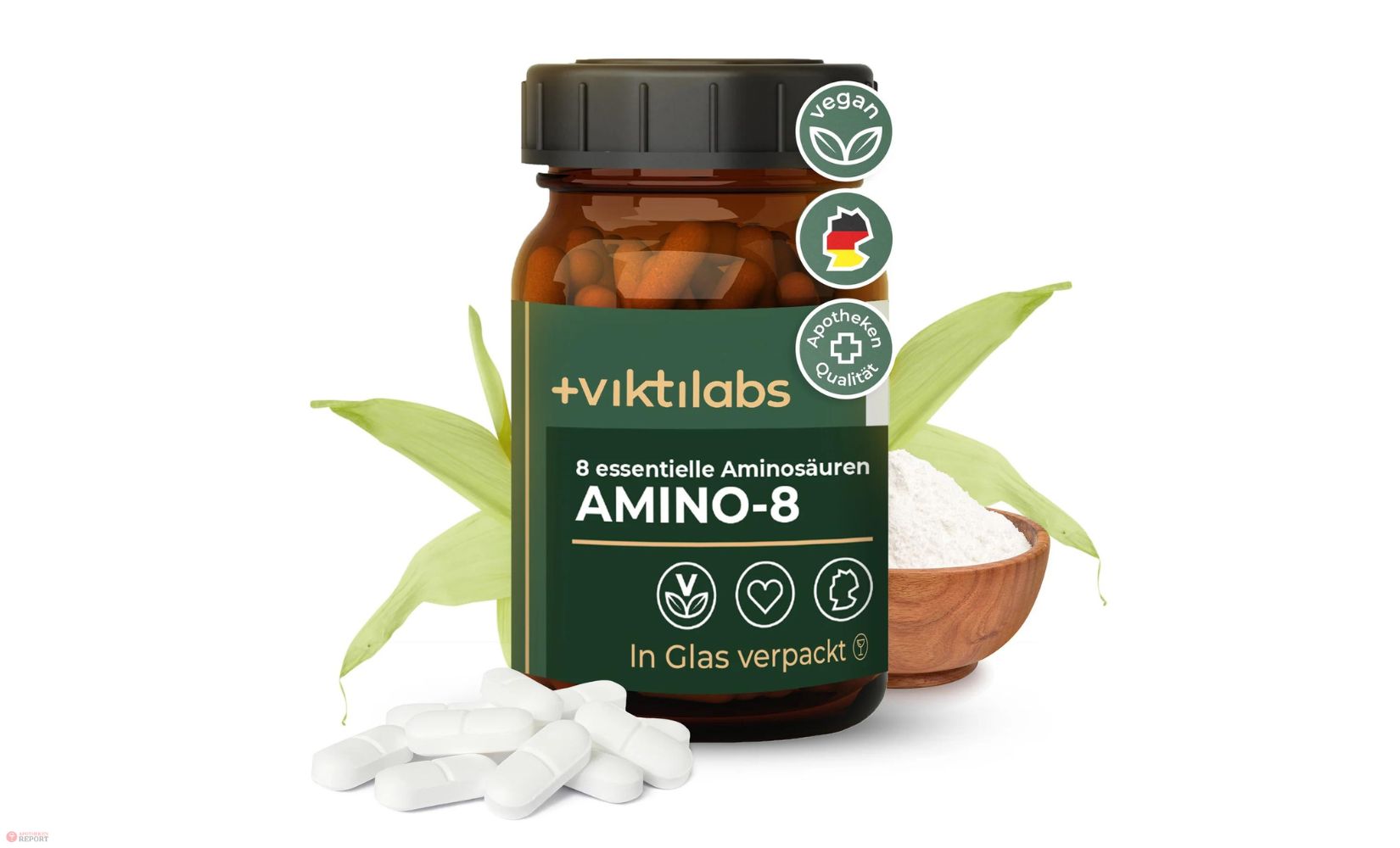
On the product’s website, it becomes clear that the manufacturers work closely with specialists who are experts in the fields of autoimmune diseases and intolerances.
What ultimately convinced me, however, were the numerous positive reviews on the Trustpilot rating platform.
This strengthened my confidence in the product.
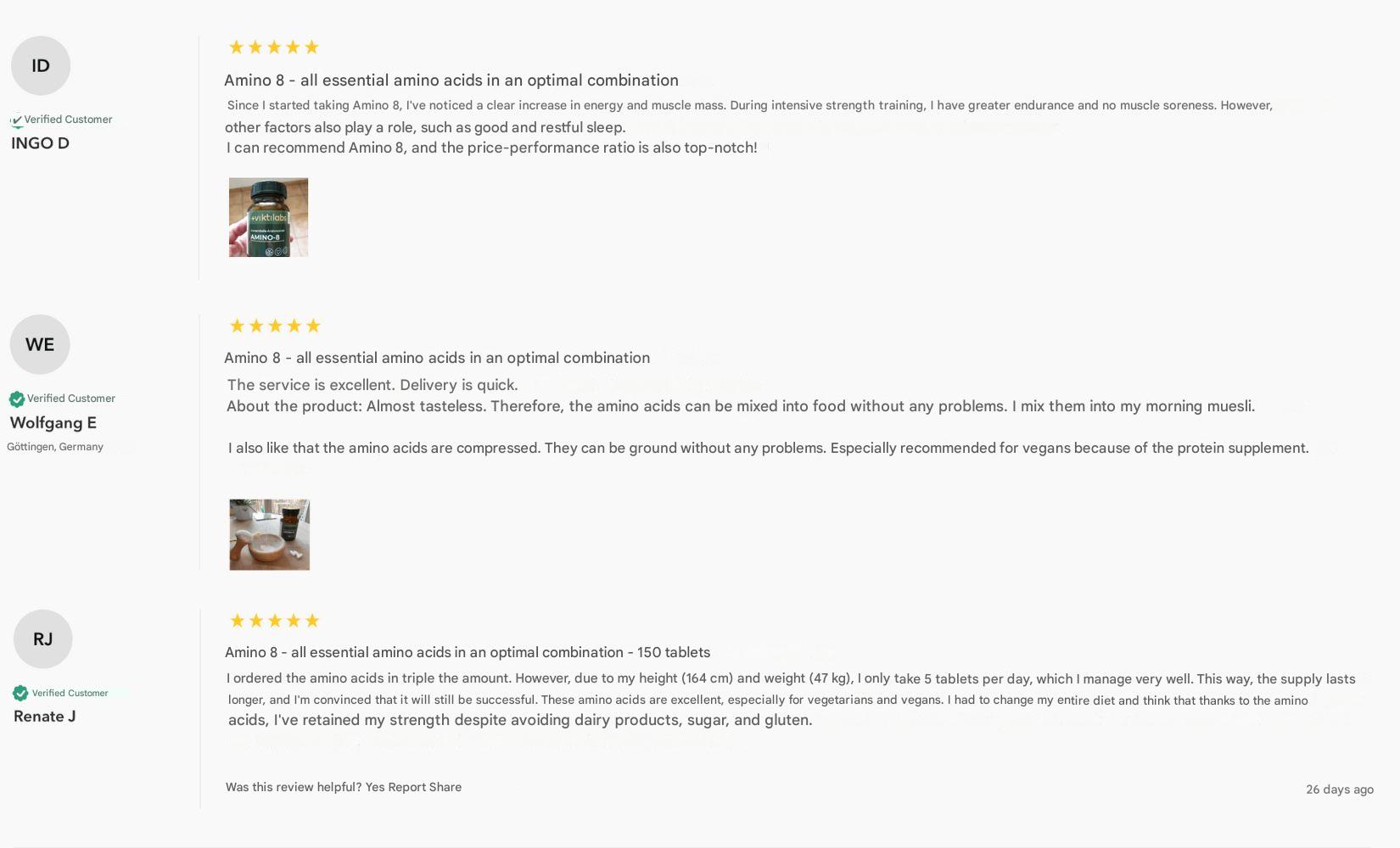
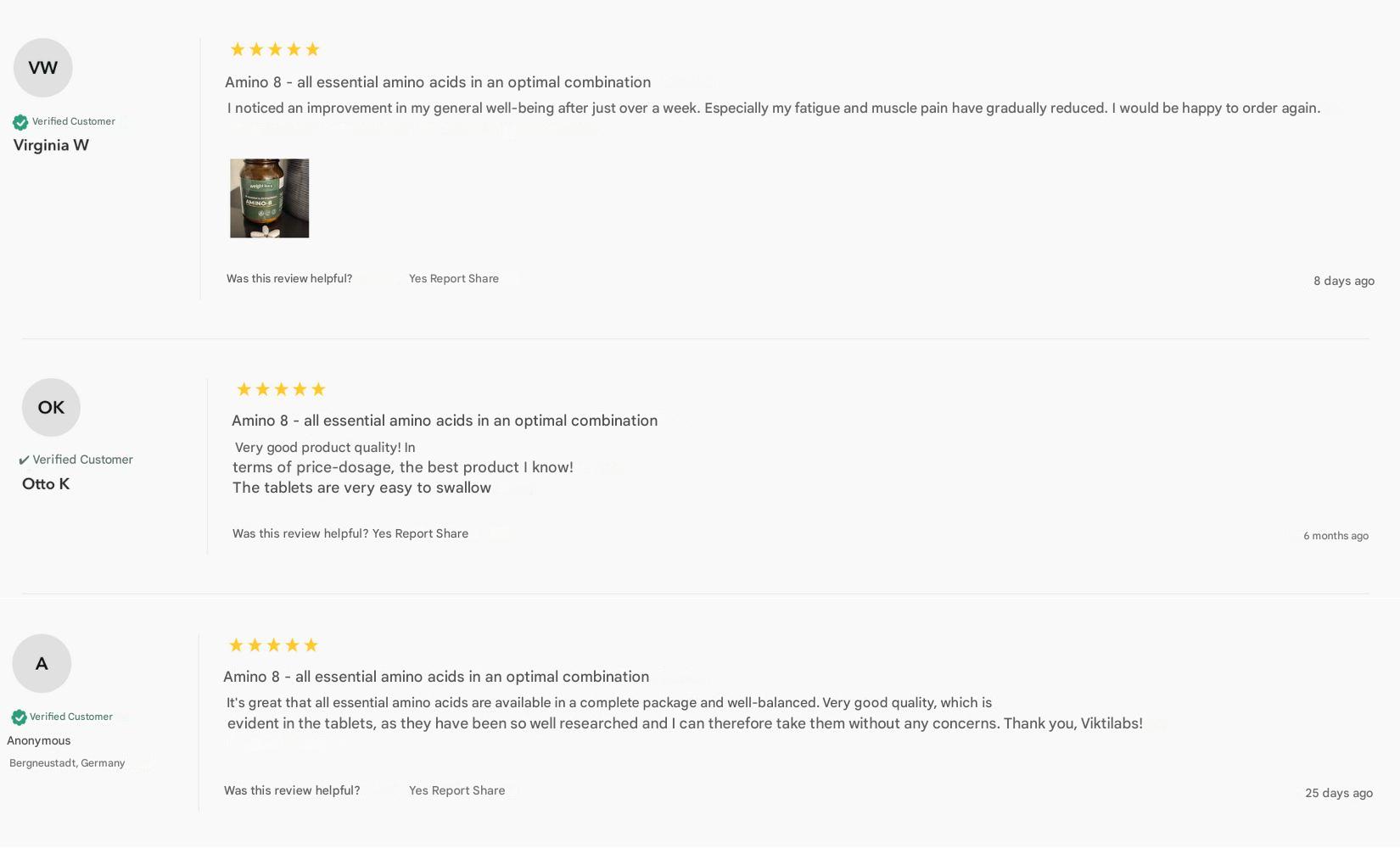
How Does Amino 8 Work?
Amino 8 consists of 100% pure amino acids based on the Human Amino Pattern.
It contains exactly the essential amino acids that are so important for people with underactive thyroid.
Additionally, Amino 8 contains two other important essential amino acids:
L-Isoleucine: This amino acid is involved in the body’s hormone regulation. It promotes insulin secretion, which in turn supports the uptake of glucose and amino acids into muscle cells. This is important not only for blood sugar regulation, but also for rapid energy production.
L-Tryptophan: As a precursor to serotonin, the so-called happiness hormone, tryptophan can positively influence mood. Studies show that people with higher tryptophan consumption experience less irritability, depression and anxiety than those with lower consumption.
The truly decisive difference of Amino 8 from other products lies in the manufacturing process.
The amino acids in Amino 8 are obtained through a digestion-like process of fermentation from corn starch.
They are absorbed directly through the mucous membranes, which eliminates the possibility of autoimmune reactions.
Amino 8 is completely vegan, free of lectins and lactose, gluten-free and without sugar or other additives.
This makes it the ideal protein source for people with underactive thyroid.
The advantage of 100% pure crystalline amino acids is that they have higher purity than amino acids from foods and other sources, are highly soluble and are quickly absorbed by the body.
This enables the body to quickly use the amino acids for building and repairing tissue.
The Self-Test - Better Thyroid Values with Amino 8
That same evening, I ordered Amino-8 online from Viktilabs.
Since there was an offer in the shop when buying three containers and it was clear to me that no immediate miracle cure for my underactive thyroid was to be expected, I decided to go for 3 containers right away.
It may be important to emphasize: Although some customers report immediate improvements, you must be aware that this is a longer process.
You supply the body with the needed nutrients to correct the amino acid deficiency and restore normal hormone production and conversion.
This takes time.
For myself, I set a goal of three months

My First Weeks with Amino 8
The delivery with the three containers of Amino 8 arrived just two days after ordering.
Each container contains 150 tablets.
According to the consumption recommendation, 5 tablets should be taken daily, ideally 15 minutes before or after a meal with 250 ml of still, lukewarm water or another still liquid of your choice.
Thus, one container lasts for 30 days, and I was supplied for three months.
The packaging made a very high-quality impression at first glance.
The tablets are a bit large, but there’s quite a lot packed into them.
Additionally, they have a “predetermined breaking point” in the middle, which makes dividing them easier.
From now on, I take 5 tablets daily.
I continue taking my Euthyrox as a precaution.
Although many customers report immediate improvements, I wanted to have my own experience.
After four days with Amino 8, two things became clear to me:
Already after the first intake in the morning, I felt an energy boost – a feeling I had never experienced with any other dietary supplement. You can literally feel how your body absorbs the amino acids.
My usual midday slump has completely disappeared.
One month with Amino 8: Improved digestion
After about a month, I understood why my midday slump had disappeared – my digestion had improved.
This was no surprise: A quick internet search reveals that amino acids are known to promote gut health.

By the way: The tablets of Amino 8 are actually very well tolerated.
Even after taking the tablets on an empty stomach in the morning, I didn’t experience any discomfort.
My other symptoms also improved.
I felt full of energy throughout the day.
I was stronger and more active – even my boss at work noticed.
The exhausting afternoons in the office due to my fatigue are now a thing of the past.
Instead of collapsing exhausted on the sofa after work, I’m now even thinking about signing up for Pilates again and doing more exercise.
After two months: Better thyroid levels
The first two bottles of Amino 8 are now used up, and I immediately reordered.
Since taking Amino 8, my life has completely changed.
No more fatigue and no more exhaustion.
Thanks to my increased performance, I was able to start exercising again.
I also lost about 3 kilos without changing my diet.
My thyroid levels have also improved slightly, which I hadn’t expected.
After all, Amino 8 is not a medication for hypothyroidism.
Together with my doctor, I began to slightly reduce my Euthyrox dose.
Over several months, I was able to reduce from 125 micrograms to 25 micrograms.
During this time, I regularly had my thyroid levels checked and paid attention to my well-being.
Despite the dose reduction, I felt steadily better.
My TSH level is now at 1, and my fT4 (free T4) is in the optimal range, as is my T3 level.
Out of curiosity, I also had my liver values tested.
L-threonine, a component of Amino 8, is supposed to support fat metabolism and liver function, plus I was able to significantly reduce my medication.
And indeed: My liver values also improved at the last examination!
I’m curious to see what they’ll look like in a year.
In short: My joy in life has returned.
The last few months have been life-changing for me.
I’m glad I discovered Amino 8 and recommend it to anyone with hypothyroidism.
Here is the link to the Viktilabs online shop, where there is currently up to 27.11% discount when purchasing multiple bottles:
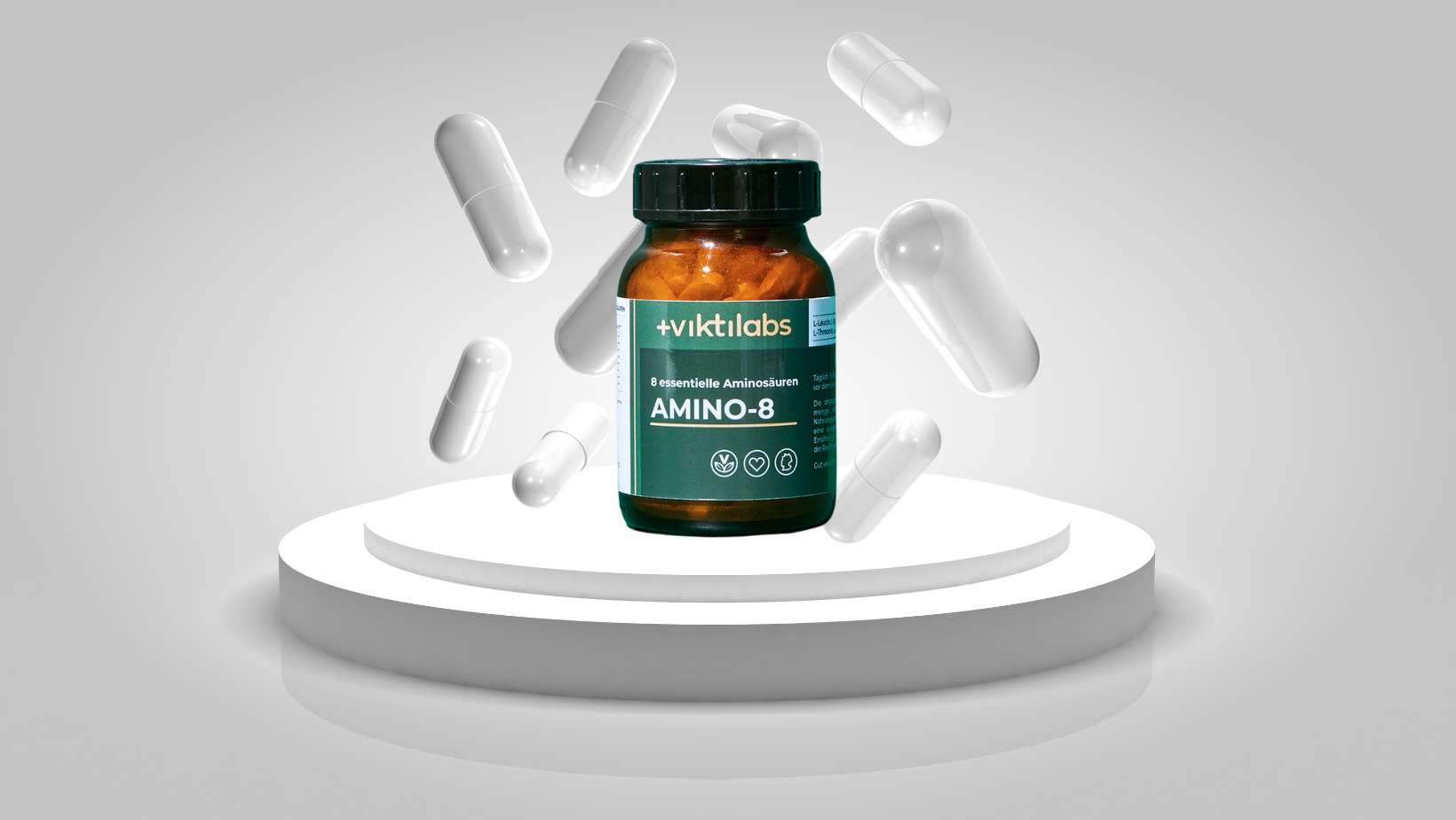
Viktilabs: The company behind Amino 8
Viktilabs, an innovative family business from Germany, specializes in dietary supplements that are particularly suitable for people with intolerances and autoimmune diseases.
The products, including Amino 8, are vegan and developed in close collaboration with experts in these fields.
Viktilabs stands for pure, high-quality ingredients and quality ‘Made in Germany’.
Founded in 2020, Viktilabs combines traditional values with modern science and has quickly developed into a growing community for health and well-being.
DISCLAIMER:
This product is not intended to diagnose, treat, cure, or prevent any disease.
This information does not constitute medical advice.
This supplement does not replace prescribed medications or treatments.
Consult your healthcare provider before starting any new supplement regimen.
